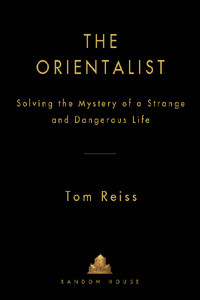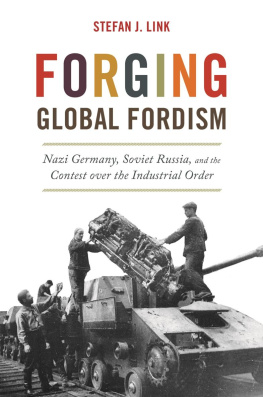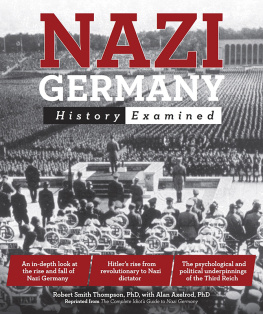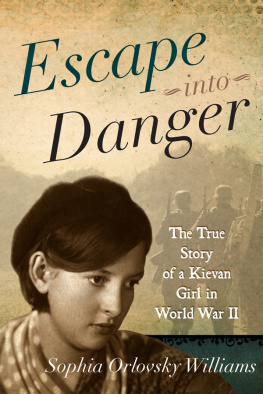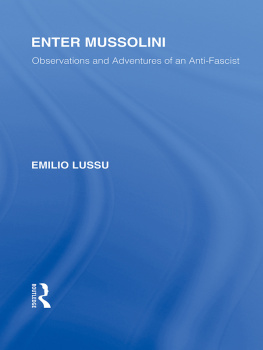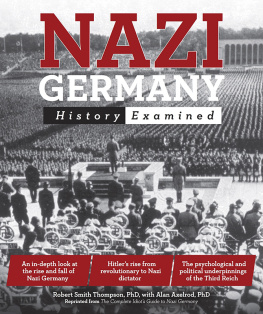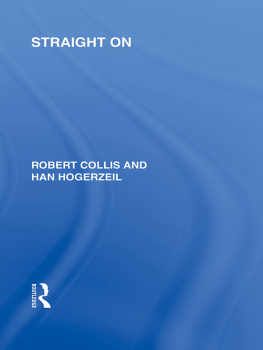CONTENTS

For Lolek,
who showed me how to travel,
and Julie,
who keeps me from going too far.
I wish they had met.
I NTRODUCTION
On the Trail of Kurban Said

O N A COLD N OVEMBER MORNING IN V IENNA , I walked a maze of narrow streets on the way to see a man who promised to solve the mystery of Kurban Said. I was with Peter Mayer, the president of the Overlook Press, a large, rumpled figure in a black corduroy suit who wanted to publish Saids small romantic novel Ali and Nino. Mayer tended to burst into enthusiastic monologues about the book: You know how when you look at a Vermeer, and its an interior, and its quite quiet, yet somehow, what he does with perspective, with light, it feels much biggerthats this novel! A love story set in the Caucasus on the eve of the Russian Revolution, Ali and Nino had been originally published in German in 1937 and was revived in translation in the seventies as a minor classic. But the question of the authors identity had never been resolved. All anyone agreed on was that Kurban Said was the pen name of a writer who had probably come from Baku, an oil city in the Caucasus, and that he was either a nationalist poet who was killed in the Gulags, or the dilettante son of an oil millionaire, or a Viennese caf-society writer who died in Italy after stabbing himself in the foot. In the jacket photograph of a book called Twelve Secrets of the Caucasus, the mysterious author is dressed up as a mountain warriorwearing a fur cap, a long, flowing coat with a sewn-in bandolier, and a straight dagger at his waist.
Mayer and I were on our way to a meeting with a lawyer named Heinz Barazon, who was challenging Overlook over proper author credit on the novel. Barazon claimed to know the true identity of Kurban Said, and as the lawyer for the authors heirs, he was insisting that it be acknowledged in the new edition of Ali and Nino or he would block publication. At the lawyers address, next to a shop where some old women were bent over tables with needle and thread, we were buzzed into a lobby that could have had the grime of the Anschluss on its fixtures. Mayer squeezed my arm with excitement and said, Its The Third Man ! Barazons appearance didnt do anything to dispel the atmosphere of a Cold War thriller. He was a small man with a gravelly voice, a stooped back, and a clubfoot that made a tremendous racket as he led us down his book-lined hallway. You have both come a long way to discover the identity of Kurban Said, he said. It will all soon become clear to you. He ushered us into a room where a gaunt and beautiful blond woman with enormous glassy eyes was lying motionless on a couch. Pardon me, this is Leela, said Barazon.
I hope youll forgive me, Leela said in a fragile, precise voice. I must remain lying down because Im ill. I cant sit for long.
Barazon came directly to the point: the novel Ali and Nino was written by the Baroness Elfriede Ehrenfels von Bodmershof, the second wife of Leelas father, Baron Omar-Rolf von Ehrenfels, and when Baroness Elfriede died, in the early 1980s, having outlived her husband, all rights to the work had passed down to Leela.
Barazon produced a thick file of documents that backed up this story: publishing contracts, legal papers, and author lists from the late thirties, stamped with Nazi eagles and swastikas. Under the entry for Said, Kurban in the authors section of the 193539 Deutscher Gesamtkatalog the Third Reichs equivalent of Books in Print it said, in no uncertain terms, pseudonym for Ehrenfels, v. Bodmershof, Elfriede, Baroness.
The Nazi documents seemed to tell a clear storythat Baroness Elfriede had been Kurban Saidbut it was one that I believed to be untrue.
I had become interested in the identity of Kurban Said in the spring of 1998, when I went to Baku to write about the citys new oil boomvirtually the first signs of life since the Russian Revolution made time stop there in 1917. Baku is the capital of Azerbaijan, a tiny country that prides itself on being the easternmost point in Europe, though most Europeans wouldnt know it. Its proximity to Iran and the fact that the majority of its citizens are Shiite Muslims can dominate your vision of Azerbaijan until you realize that the most impressive public building in Baku is not a mosque but a copy of the grand casino at Monte Carlo. Baku is the sort of city that has been beyond rigid ideologies and religions for a thousand years. Its name is said to derive from a Persian expression, baadiye - kubiden, or blow of the winds. Being situated at the head of a desert peninsula jutting into the sea, the city is in fact one of the windiest places on earthone dapper ninety-seven-year-old man told me how, as a young man, he and his family had worn specially made goggles with their evening clothes to stroll along the boulevards without being blinded by the sands.
Just before I left for Baku, an Iranian friend had recommended Kurban Saids novel Ali and Nino as a kind of introduction to the city and the Caucasus in general, saying that it would be more useful than any tourist guide. I had never heard of it, and when I tracked down a 1972 Pocket Books edition, I was a little surprised by the cover. It featured two airbrushed lovers and an endorsement from Life: If Kurban Said cant push Erich Segal off the bestseller list, nobody can! But there turned out to be something of the eighteenth century about the book, as if Candide had been written with realistic characters and the intention of sweeping readers off their feet. Each scene continued only long enough to spring some miniature gear that moved the mechanism forward. The reviewer in The New York Times had written, One feels as if one has dug up buried treasure.
The novel revolves around the love between a Muslim boy and a Christian girl and the progress of their relationship as they grow up; in the culturally tolerant world of old Azerbaijan, their courtship seems blessed, though they are constantly bickering: Ali Khan, you are stupid. Thank God we are in Europe. If we were in Asia they would have made me wear the veil ages ago, and you couldnt see me. I gave in. Bakus undecided geographical situation allowed me to go on looking into the most beautiful eyes in the world.
Over the course of its history, Azerbaijan had been conquered by Alexander the Great, the Mongols, the Ottomans, and the Persians. Finally, its undecided geographical situation was resolved when the Russians captured it in 1825. During the period of czarist expansion in the Caucasus, so vividly recounted by Lermontov, Tolstoy, and Pushkin, Europe discovered Baku and Baku discovered Europe. And everyone discovered oil. Lots of it. In Baku you did not need to drill for the stuffit sat on the surface of the earth, in black ponds, sometimes enormous lakesand the flow could be so strong that crude occasionally swallowed whole houses along the Caspian shore. The walled caravan outpost soon became the center of the burgeoning global oil industrysupplying more than half the worlds crudeand the result was a fabulous nineteenth-century city built on the profits: extravagant mansions, mosques, casinos, and theaters from the period when the city was home to the Rothschilds, the Nobels, and dozens of local Muslim oil barons, as they were called. There was Mir Babayev, a popular singer who, after discovering oil on his land, spent the rest of his days searching out his record albums and destroying them because he preferred to be remembered as an oil magnate. And there was Haji Zeynalabdin Taghiyev, who made his fortune when an earthquake struck his land, flooding it with oil; he built the first school for girls in the Muslim world. Building wars sprang up. Moorish palaces still sit next to Gothic manses, and Byzantine cupolas next to bejeweled rococo pavilions. The locals styled themselves cultured Europeans and modern Muslims, right up to the point when the Bolsheviks decided they were decadent bourgeois and swooped in to crush them.

